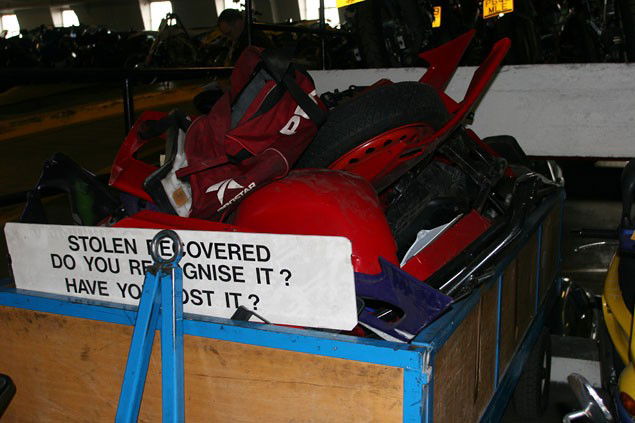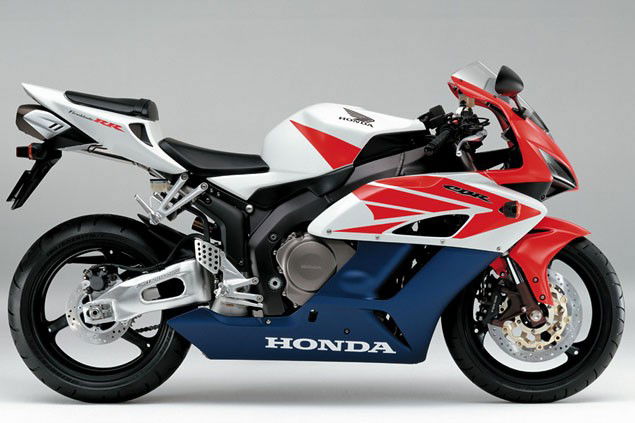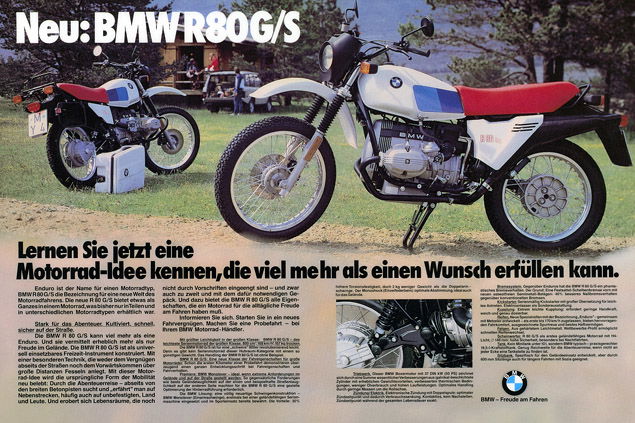How my stolen 'Blade ended up on the WSB grid
In 2004 I had a Honda Fireblade, and very nice it was too. Then some lowlife scum decided to relieve me of it. Now, years later, the police have recovered the bike. What happened in between?


If you’ve ever had a bike stolen you will know that horrible sinking feeling in the pit of your stomach, when you return to where you parked the it and something is wrong. At first you try and kid yourself - you must have parked it somewhere else, in another car park, on a different street - but as the truth slowly hits you it’s one of the worst feelings in the world. Someone has taken your bike, and now you have no transport and months of insurance wranglings. No matter what, you’re hugely inconvenienced and out of pocket just because some thief has had his way.
When my new Fireblade was stolen from a locked garage at my property in South London I assumed it was the last I’d see of it. But five years later it has been found and now, with the help of DC Mike Pilbeam and DC Gavin Smith from the Met’s Stolen Vehicle Unit, we can piece together exactly what has happened to it over the missing years. Hopefully you can learn from its experiences and save your bike.
1. The steal
“Bike thieves are mainly opportunists, but you do get some premeditation,” explains DC Smith. “Yours was stolen from a locked garage, so they didn’t stumble across it. The gang knew it was there and went for it. It doesn’t matter, they would have dragged it over the top of a car if needs be, they saw it going in and out of the garage and wanted it because it was a new bike. At this point it would have been stuck in the back of a van and taken to a ‘fix-it man.’ It probably wasn’t stolen to order, but was a new sportsbike and in a location that made the theft easy. Gangs use spotters or lower-order gang members to find bikes. Kids will break a steering lock by hand then wheel the bike about half a mile away from where it was parked and leave it to see if the police turn up. When they are sure it doesn’t have a tracker fitted, another gang member will turn up in a van and take it to the fixer. Gangs also drive around in vans looking for easy targets; they will stop, pick the bike up, and load it into a van, often in broad daylight. An alarm going off doesn’t usually bother them.”
2. The fixer
Once the bike is with the ‘fix-it man’ it’s either broken up and sold or it has its identity changed and is sold as a secondhand bike. How do you change a bike’s identity so it appears legitimate? You use a legitimate identity. My bike’s frame and engine numbers were erased and replaced with numbers from a British Superbike. Why? When a race team buys a brand new bike to go racing, the manufacturer registers the bike as a sale and obtains a registration number for it to boost sales figures.
Race teams have no need for this logbook as the bike is never destined for the road, but a thief can get hold of the bike’s V5 document lawfully, and can then use the frame and engine numbers, as well as the registration plate, on a stolen bike, safe in the knowledge that if the police do a check it will come up as a legitimate bike. Effectively there are two bikes in existence with the same frame and engine numbers, the stolen road bike and the racer, but the racer’s identification will never hit police records as it lives on track. Bingo, you now have a bike that will pass an HPI check and can be sold on.
As long as you have a skilled forger to replace the frame and engine numbers no one will suspect anything. But there is another route. Some less than scrupulous dealers are bringing in brand new whole bikes, breaking them for spares, then selling the frame and identification documents onto thieves. A frame with no identification papers costs £400, one with legitimate identification can go for nearer £4000. Thieves buy this frame and either swap all the components over, giving the bike a new identity, or simply erase the bike’s numbers and put on the ones from the legitimate frame, saving time and effort. Either way the result is the same, when it comes to standard HPI checks the bike appears legal and can easily be sold on.
I bought Urry’s stolen blade! By Paul Farrell
I bought the bike from a local dealer. He wanted £5000 including my old ‘Blade. I rode it and it seemed alright. I phoned the DVLA, checked the frame numbers, had it HPI checked – the works. As far as I was concerned it was fine. A few months later I had a problem with the electrics so I took it to Honda UK and they sorted the problem under warranty, no bother.
Then I got a call from the police. The guy said he was from the Met and asked if he could come and have a look at the bike because he thought it might be stolen. They checked the bike’s headstock and noticed one of the numbers was wrong, loaded it in the back of a van and I was left with no bike. My solicitor got my £5000 back from the dealer, but I reckon I’ve lost about £1000 in costs, plus all the grief. The worst thing was trying to explain to the kids why the police were taking daddy’s bike away. I did all the checks, went to a dealer, everything that was sensible, but you can only do so much I guess.

Stolen Fireblade
3. The buyer
This could very easily be you. “Private buyers and bike dealers have to ask themselves a question,” says DC Pilbeam. “If a new bike is offered to them cheaper than it should be, why is this?” Simple, it could be stolen. The thief will either take a cash deal for the bike, or offer a part exchange for a completely legal bike on the dealer’s floor and ride away on a bike he can sell on again later, leaving the dealer with the stolen bike. Between 2005 and 2007 the police aren’t sure what happened to my bike, but it is almost certain that it was being ridden around on the road
either by a criminal or someone completely unaware they were riding a stolen bike. So why don’t dealers pick up on the fact the bike is stolen? “Some of the gangs are so good at forging frame numbers it can be very hard to spot, and dealers sometimes don’t look closely enough at the frame numbers,” said DC Smith. “An HPI check will come back clean, the numbers on the bike are legitimate, and so they unwittingly sell it to customers.” Eventually, in 2007, my bike re-entered the dealer network, following a trip that had taken my logbook to BSB and WSB grids.
4. The aftermath
The first, and most concerning result of someone buying a stolen bike is the safety angle. Do you honestly think someone who is bolting a new frame in a stolen bike gives a shit about torque settings? Riders of rung bikes are potentially riding a death trap, and if it’s a new bike it won’t have to face an MOT for three years.
This is how the police found my bike. Investigations lead them to Wiltshire and the owner who had, purchased my ‘Blade through an innocent dealer. DC Smith and DC Pilbeam contacted the owner, drove down to meet him, confirmed that the bike was stolen and took it away as evidence, leaving the innocent owner without a bike. Tough justice. Despite not knowing his bike was stolen, the fact that it was meant that his insurance was automatically invalid, so if he had been involved in an accident the owner, Paul Farrell, would have been on a sticky wicket.
What can he do? The only route left to the buyer is to sue the dealer who sold him the bike, which he is entitled to do (no matter how long ago he bought the bike) as the bike was sold to him under false pretences. In law the dealer doesn’t really have a leg to stand on, apart from sueing whoever sold them the bike. If this was the thief then the dealer is screwed and has to accept a financial loss. If it’s another dealer he has to sue them for the money, and so on, right down the chain.
5. The final journey
My bike is now evidence in a criminal investigation, so for now it will sit in a police compound until the investigation is over. When this happens the bike is handed over to the insurance company who dealt with the original claim back in 2004, they will put it up for sale in a vehicle auction, but not until the Met Police have erased its illegal frame numbers. At this point it will be legally allowed back on the road.
Which leads us to the final irony. After all these years on a false plate with false identification numbers my Blade will be back on the road displaying its original registration number and with its original frame and engine numbers legally re-stamped on. Because no part of the actual bike has been changed, only the numbers modified, it doesn’t have to run a Q-plate and can now be returned to as it was before it was stolen. And all this on a five-yearold Fireblade that has had a more colourful life than most…

